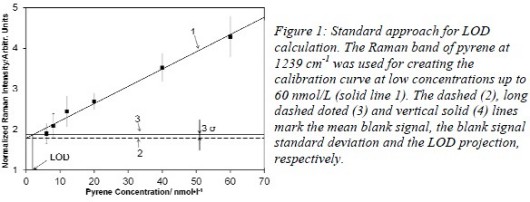|
Plenary
Lecture
Trace Analysis of Toxic PAHs in Water by Combining SERS
with SERDS

Professor Frank Hubenthal
co-authors: R. Ossig, Y.-H. Kwon, H.-D. Kronfeldt
Institut für Physik and Center for
Interdisciplinary Nanostructure Science and Technology
CINSaT, Universität Kassel
Kassel, Germany
E-mail:
hubentha@physik.uni-kassel.de
Abstract: During the last decades, much attention
has been paid to trace detection of polycyclic aromatic
hydrocarbons (PAHs) in water, because they are known to
be toxic to biota and may bioaccumulate in aquatic
organisms. Furthermore, PAH molecules are dissolved in
water with extremely low concentrations because of their
high octanol/water coefficients. Hence, for PAH
detection a molecule specific technique that is capable
to measure small concentrations is necessary. Raman
scattering is a vibrational spectroscopic technique that
allows specific substance identification due to its
inherent molecule fingerprinting capability, by
detecting the inelastically scattered laser light from
molecules. However, conventional Raman spectroscopy has
the drawback of very small cross sections and usually a
broad and strong fluorescence based background, both
limiting trace analysis of chemicals. To overcome the
first drawback, surface enhanced Raman spectroscopy (SERS)
has successfully been used. SERS is a powerful
analytical tool that is based on Raman signal
amplification of analytes by the local field of noble
metal nanostructures excited with laser light. To remove
the fluorescence background shifted excitation Raman
difference spectroscopy (SERDS) has been invented.
In this presentation a general introduction in the
techniques of SERS and SERDS as well as in the unique
optical properties of noble metal nanoparticles will be
given, followed by an explanation of the preparation of
the nanoparticle ensembles, which serve as SERS
substrates. Afterwards I will demonstrate that combining
SERS with SERDS allows trace detection of pollutant
chemicals. I will show how crucial the Raman signal of
pyrene depends on the morphology of the nanoparticles
and demonstrate that the Raman intensity is maximized if
optimised nanoparticles are used. For this purpose, we
have determined the limit of detection (LOD) for pyrene
and fluoranthene in aqueous solution by applying SERS in
combination with SERDS, using different morphologies of
the SERS substrates. With an optimised SERS substrate
the LOD of pyrene and fluranthene has been determined to
be as low as 2 nmol/L (figure 1.), which is sufficient
for trace analysis. Finally, I show the Raman response
as a function of time. Since response times clearly
below 10 minutes are observed, the system is capable to
be implemented in an alarm sensor that can detect traces
of PAHs in water in a short time.

[1] Y.-H.
Kwon, R. Ossig, F. Hubenthal, H.-D. Kronfeldt, J. Raman.
Spec., DOI 10.1002/jrs.4093
[2] F. Hubenthal, D. Blázquez Sánchez, N. Borg, H.
Schmidt, H.-D. Kronfeldt, F. Träger; Appl. Phys. B 95,
351 (2009)
Brief Biography of the Speaker:
Frank Hubenthal finished his PhD work in 2001 at the
University of Kassel and received his Habilitation in
2007. In the same year he was awarded as associated
professor. Frank Hubenthal is a member of the Center for
Interdisciplinary Nanostructure Science and Technology –
CINSaT at the University of Kassel, a member of the
American Nano Society and the German Physics Society.
His research concentrates on the production,
characterisation and application of noble metal
nanoparticles. In particular, his interest is to exploit
the local near fields of noble metal nanoparticles for
surface enhanced Raman spectroscopy and surface
structuring. Furthermore, Frank Hubenthal investigates
the ultrafast electron dynamics and determines the
dephasing times of localized surface plasmon resonances
and the damping parameters of noble metal nanoparticles.
By quantifying the different damping contributions to
the dephasing time, he contributes to the fundamental
understanding of the plasmons nature. Frank Hubenthal
has written more than 45 publications and contributed to
the major reference work Comprehensive Nanoscience and
Technology Eds.: Andrews DL, Scholes, GD and Wiederrecht
GP, Oxford: Academic Press.
|

